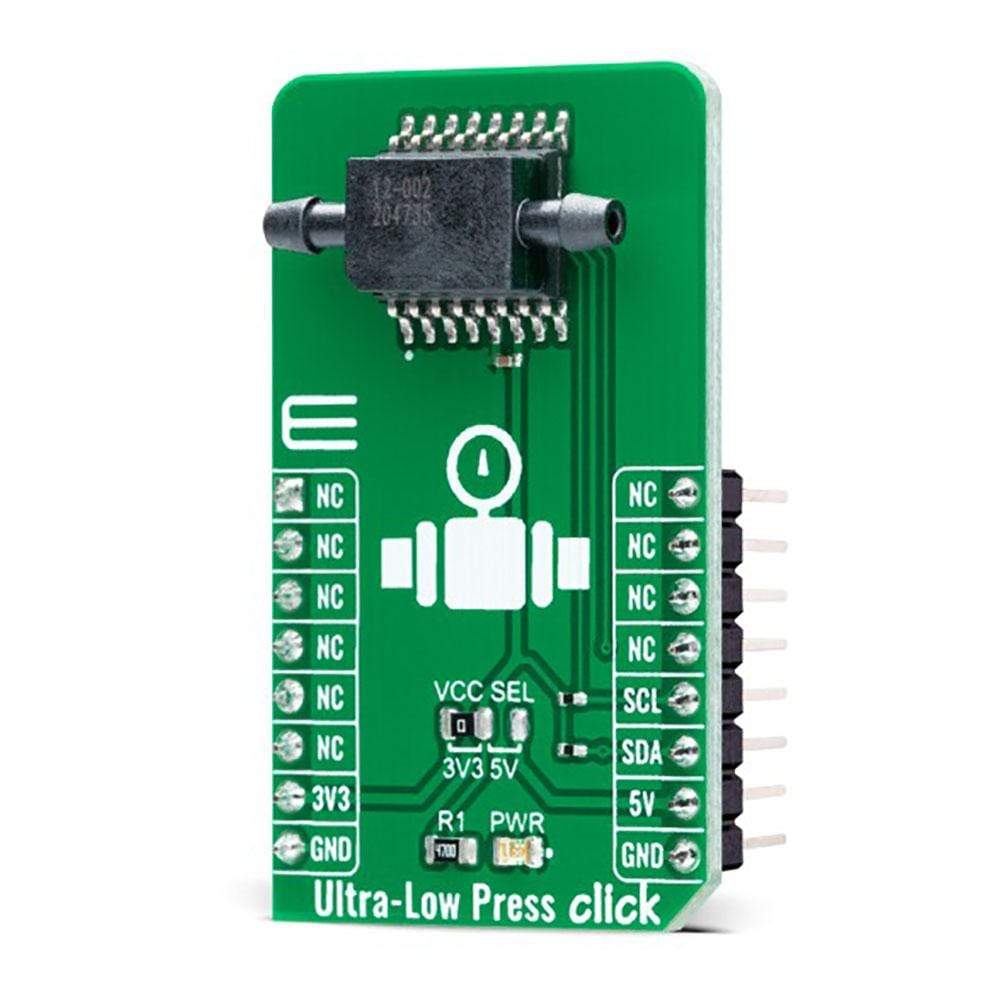
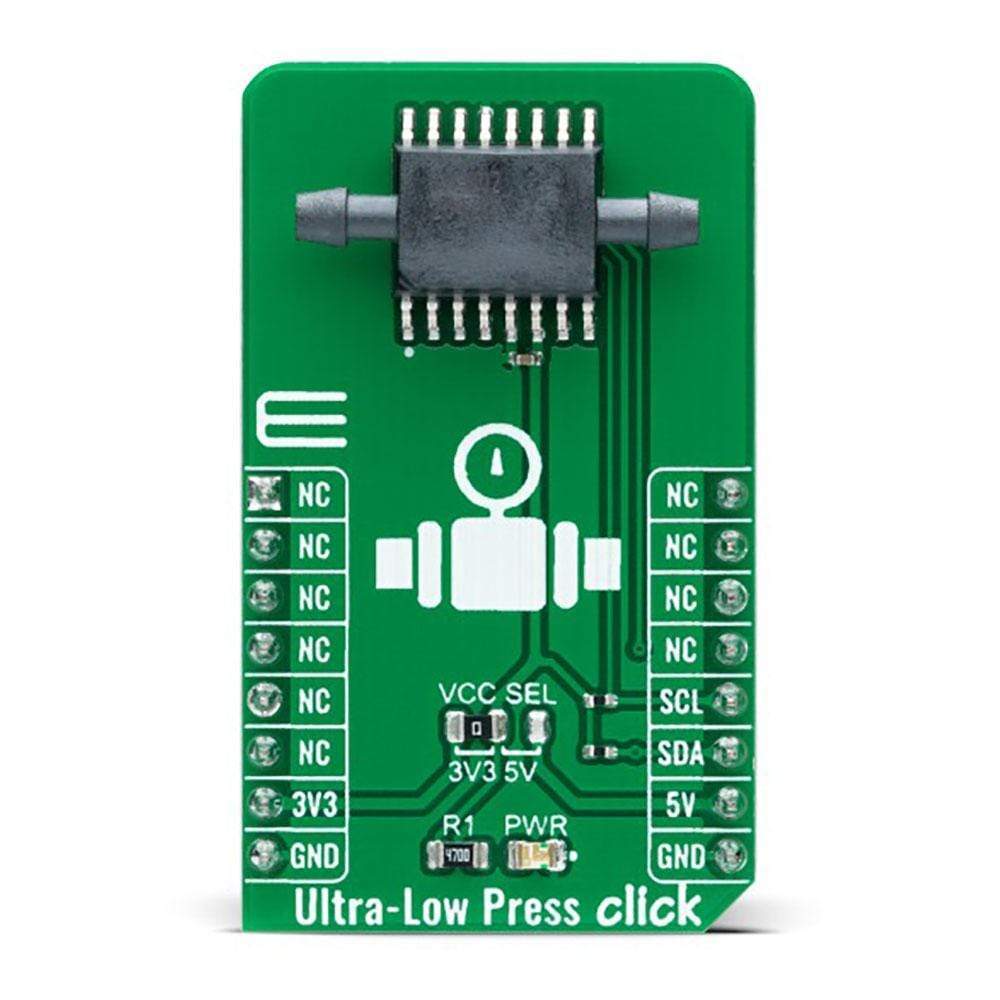
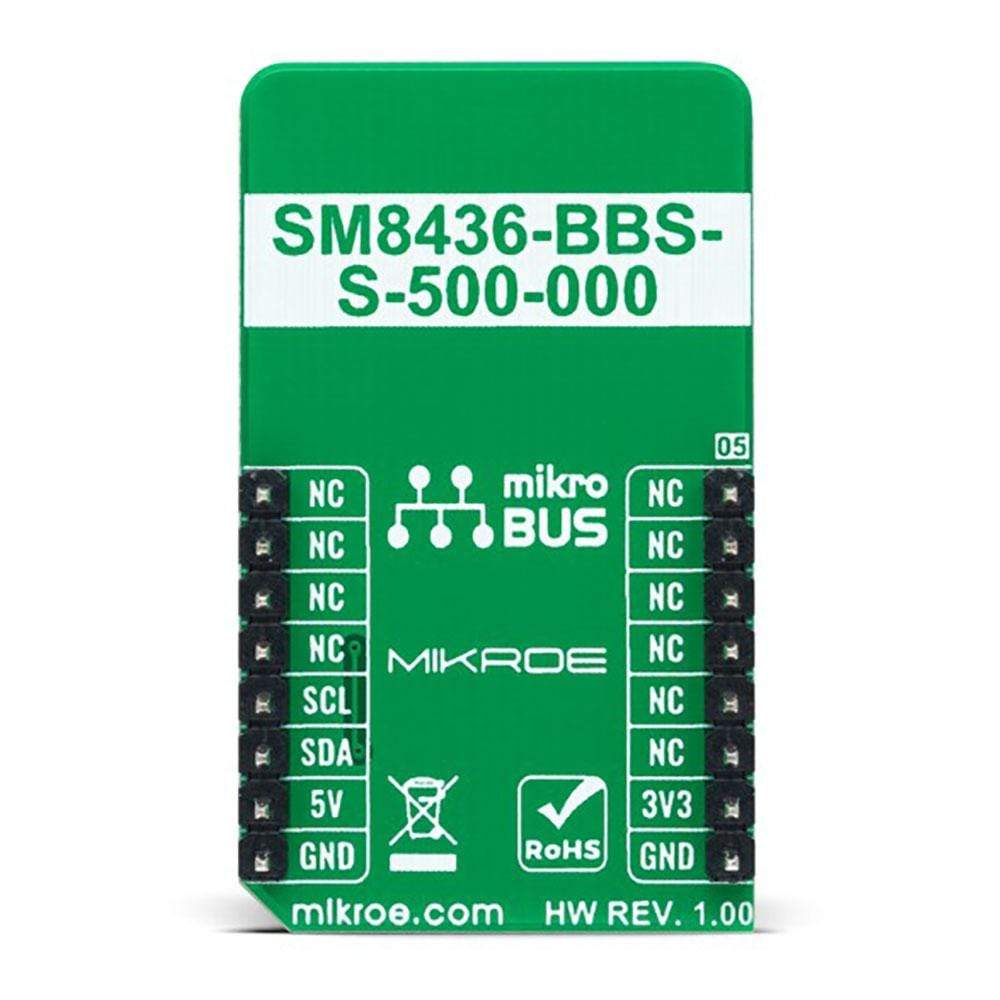
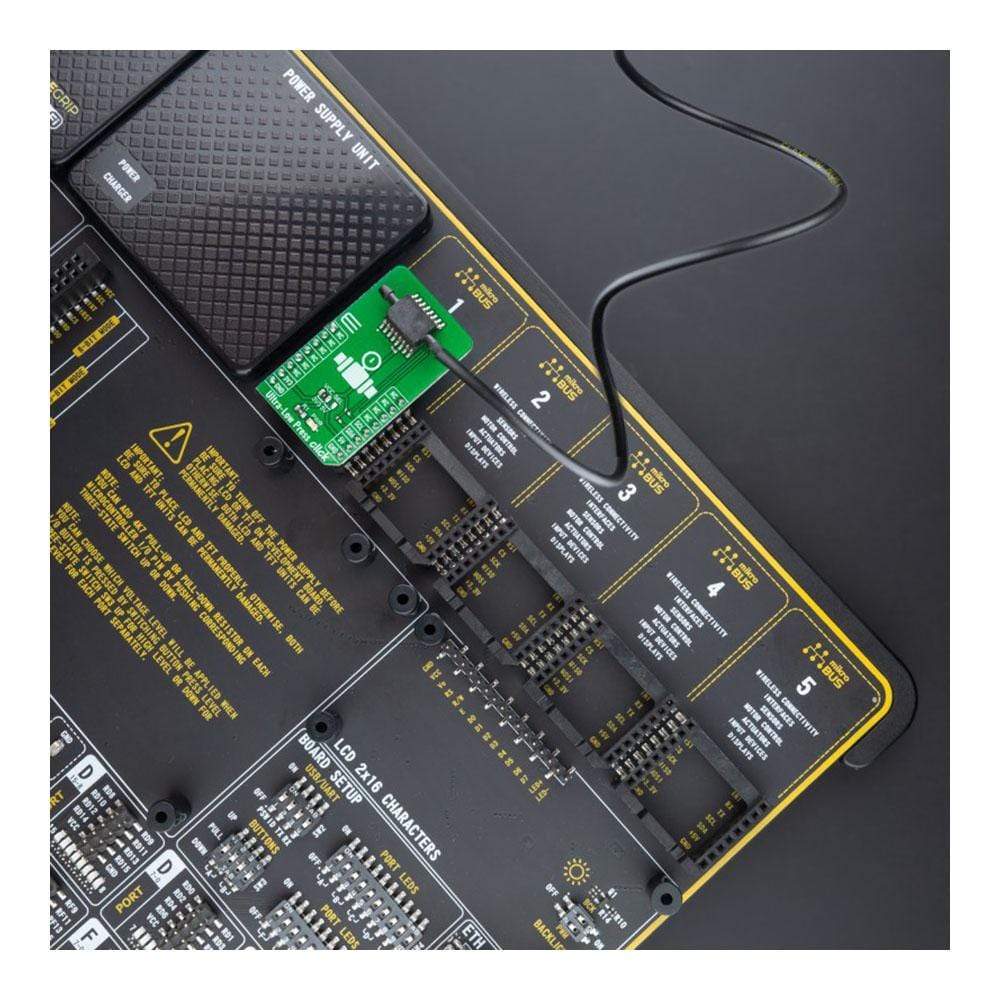
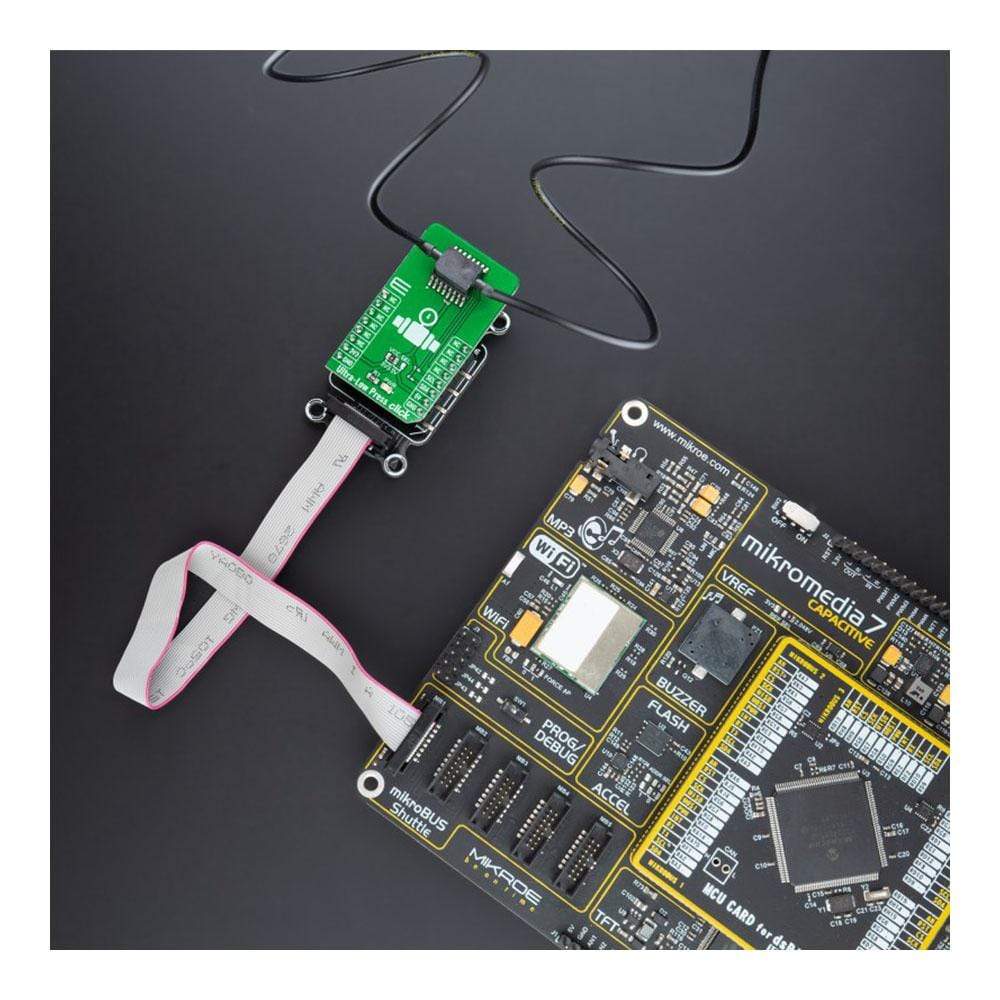
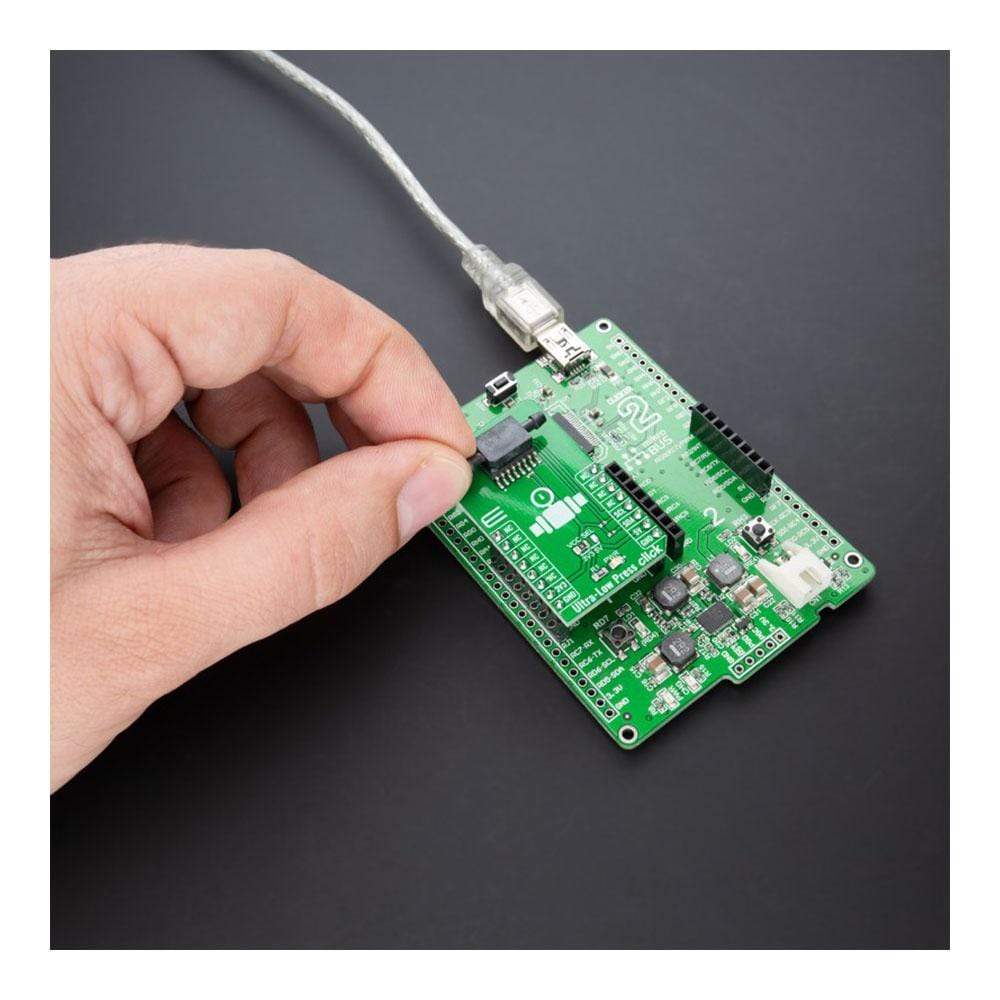
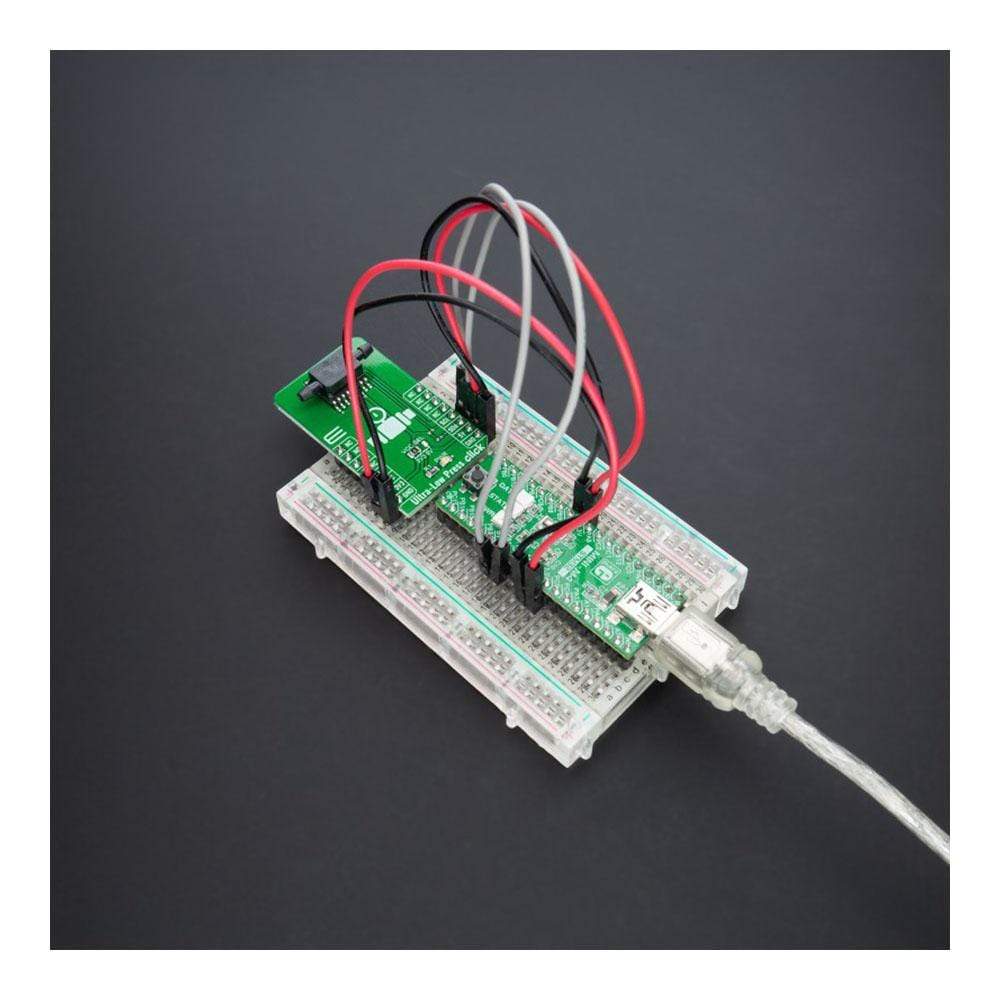
Overview
The Ultra-Low Press Click Board™ is a compact add-on board containing a mountable gauge pressure sensor for pneumatic pressure measurements. This board features the SM8436, an I2C configurable ultra-low pressure sensor with high accuracy and long-term stability from Silicon Microstructure SMI ( part of TE Connectivity ). A state-of-the-art MEMS pressure transducer technology and CMOS mixed signal processing technology produces a digital, fully conditioned, multi-order pressure and temperature compensated sensor like this available in a gage pressure configuration. It also features superior sensitivity needed for ultra-low pressure measurements ranging from 0 to 250Pa Differential / 500 Pa Gauge.
The Ultra-Low Press Click Board™ is suitable for differential pressure measurements found in pressure monitoring applications like building Fire safety systems, Isolation rooms and high purity work stations, and positive pressure solutions found in Hospital surgical environments.
Downloads
How Does The Ultra-Low Press Click Board™ Work?
The Ultra-Low Press Click Board™ is based on the SM8436, a high precision, factory-calibrated pressure sensor for ultra-low pressure measurements ranging from 0 to 500Pa from TE Connectivity Measurement Specialties. It combines a low-pressure MEMS die with a 16-bit ASIC, utilising DSP for multi-dimensional polynomial error correction. The calibrated pressure output data, alongside status information on the sensor integrity and unique serial number, is available via the digital data interface.
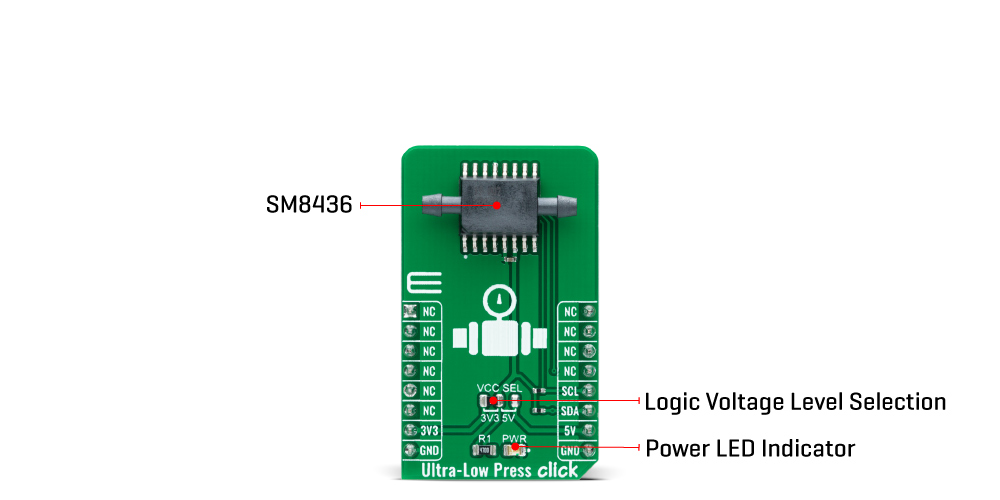
The Ultra-Low Press Click Board™ represents an ideal solution for lower pressure-sensing capabilities in industrial and medical markets. From HVAC and gas flow to continuous positive airway pressure (CPAP), ventilation, and patient monitoring applications, the ability to detect small pressure changes is critical. This demand requires pressure sensor to be highly accurate and provide long-term stability, which is achieved with this board.
The Ultra-Low Press Click Board™ communicates with MCU using the standard I2C 2-Wire interface with a maximum clock frequency of up to 400kHz. It is fully adjustable through software registers where the digital output data is available with a word length of 16-bit. The I2C interface allows setting the SM8436 into a Sleep Mode using a specific command (Enter Sleep Mode), which confirms low consumption of less than 10μA. In Sleep Mode, no pressure data is acquired. To wake up the sensor from its Sleep state, the clock line SCL shall be toggled (a rising edge at SCL will wake up the device).
The Ultra-Low Press Click Board™ can operate with both 3.3V and 5V logic voltage levels selected via the VCC SEL jumper. This way, it is allowed for both 3.3V and 5V capable MCUs to use the I2C communication lines properly. However, the Click board™ comes equipped with a library containing easy-to-use functions and an example code that can be used, as a reference, for further development.
SPECIFICATIONS
| Type | Pressure |
| Applications | Can be used for pressure measurements in industrial, medical, and consumer applications, i.e., airflow, gas flow, and barometric air pressure |
| On-board modules | SM8436 - high precision, factory-calibrated pressure sensor for ultra-low pressure measurements ranging from 0 to 500Pa from TE Connectivity Measurement Specialties |
| Key Features | Ultra-low power consumption, high accuracy, long-term stability, pressure calibrated and temperature compensated output, superior sensitivity, and more. |
| Interface | I2C |
| Compatibility | mikroBUS |
| Click board size | M (42.9 x 25.4 mm) |
| Input Voltage | 3.3V or 5V |
PINOUT DIAGRAM
This table shows how the pinout of the Ultra-Low Press Click Board™ corresponds to the pinout on the mikroBUS™ socket (the latter shown in the two middle columns).
| Notes | Pin |  |
Pin | Notes | |||
|---|---|---|---|---|---|---|---|
| NC | 1 | AN | PWM | 16 | NC | ||
| NC | 2 | RST | INT | 15 | NC | ||
| NC | 3 | CS | RX | 14 | NC | ||
| NC | 4 | SCK | TX | 13 | NC | ||
| NC | 5 | MISO | SCL | 12 | SCL | I2C Clock | |
| NC | 6 | MOSI | SDA | 11 | SDA | I2C Data | |
| Power Supply | 3.3V | 7 | 3.3V | 5V | 10 | 5V | Power Supply |
| Ground | GND | 8 | GND | GND | 9 | GND | Ground |
ONBOARD SETTINGS AND INDICATORS
| Label | Name | Default | Description |
|---|---|---|---|
| LD1 | PWR | - | Power LED Indicator |
| JP1 | VCC SEL | Left | Logic Level Voltage Selection 3V3/5V: Left position 3V3, Right position 5V |
ULTRA-LOW PRESS CLICK ELECTRICAL SPECIFICATIONS
| Description | Min | Typ | Max | Unit |
|---|---|---|---|---|
| Supply Voltage | 3.3 | - | 5 | V |
| Pressure Measurement Range | 0 | - | 500 | Pa |
| Resolution | - | 16 | - | bits |
| Operating Temperature Range | 0 | +25 | +70 | °C |
| General Information | |
|---|---|
Part Number (SKU) |
MIKROE-4676
|
Manufacturer |
|
| Physical and Mechanical | |
Weight |
0.02 kg
|
| Other | |
Country of Origin |
|
HS Code Customs Tariff code
|
|
EAN |
8606027383205
|
Warranty |
|
Frequently Asked Questions
Have a Question?
Be the first to ask a question about this.







